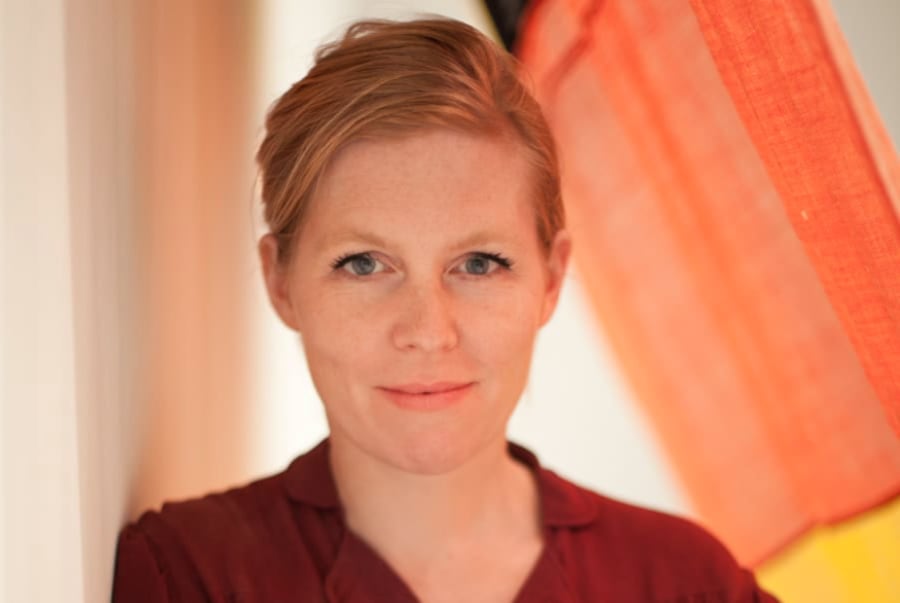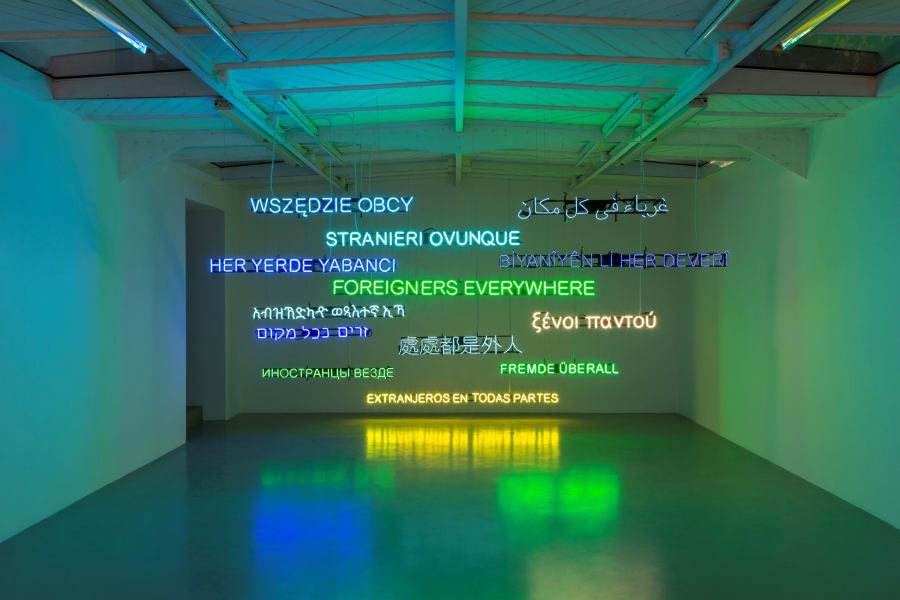Elsewhere has always been where the artist Chloé Quenum (b. 1983) has trained her gaze. Her keen eye seeks out the things and objects that surround us, where they’re from, their meaning, their movement, their part in the unknown. From the journey of a pineapple, depicted in trompe-l’oeil paintings (in the exhibition ‘Overseas’ at the art center Les Bains-Douches in Alençon, France in 2021), to her abstract pictograms inspired by the rebus etched into West African gourds (Les nuages rendent la lune invisible, 2023), her constant questioning pushes her to create a body of work that sheds light on – without finding the solution to – the complexity of the world.
Quenum felt that sensation of foreignness most acutely during a six-month residency in New Zealand, where she was invited for the international program Te Whare Hēra in 2018. ‘I didn’t realize just how far I was going until I was on the other side of the planet, under a different sky, with a 12-hour time difference with France. It was a very moving experience; it brought up a lot of things,’ she remembers. Once there, she started to work on a project on Maori textiles.
Quenum first studied at the École nationale supérieure des arts appliqués et des métiers d’art, before going on to study at the Beaux-Arts de Paris, from which she graduated in 2011. ‘I have always been interested in how fabric is made, the meaning behind colors, the codes inherent in thread.’ But once settled in an island country where mixed-race backgrounds are very rare, she began to be fascinated by the construction of identity, seen through the prism of surnames.
Her prosaic question, ‘What’s your name?’, was a way for her to collect, through audio recordings, the stories of people who participated in her workshops and to sketch out an economic and social map. This was at the heart of her installation, which was inspired by observations about the transport and supply of vegetables, as well as how tattoos, in becoming so common, are emblematic of the way that symbols lose their meaning and take on a purely decorative role. Taking the title for her show in New Zealand, ‘Le Sceau de Salomon’, from a medicinal plant, her first exhibition outside Europe showed how the subject matter of exotic patterns and their displacement, already prominent in her work, had taken on even greater significance.
In response to the surprise expressed at her inclusion in the Benin Pavilion in Venice alongside Ishola Akpo, Moufouli Bello, and Romuald Hazoumè, Quenum reminds us with an amused smile that her father is Beninese. She said that she was thrilled to be commissioned by the curator Azu Nwagbogu, who had no hesitations about opening up the pavilion to artists from the diaspora, as well as juxtaposing Hazoumè, whose work is often exhibited internationally, with less well-known artists like Akpo and Bello. However, Quenum’s career is on the rise, with her work found in several public museum collections, including the Centre Pompidou in Paris.
For her project in Venice, she explains that her jumping off point was the collections of the Musée du quai Branly – Jacques Chirac in Paris (dedicated to Indigenous and First Nations cultures), and how she was guided in her research by the curator Gaëlle Beaujean. She recreated in blown glass flutes, bells, xylophones, and other instruments from the ancient kingdom of Dahomey (which covered the south of what is now Benin, for around 300 years, beginning in the 17th century). This physical manipulation meant that she had to either add to or take away from certain qualities of these objects, creating new versions that had possibly lost meaning or lacked fidelity to the originals. In the same way that our common knowledge embellishes or omits certain aspects of reality, it is these factual gaps that interest Quenum and to which her work tries to subtly draw our attention. ‘There are things that we miss all the time: because they haven’t been recorded, or because they’ve maybe been erased. It goes back to the relationship that we have with our memory, which is also full of gaps, just like every process of transmission,’ remarks Quenum, who also studied anthropology of writing at the École des hautes études en science sociales.
One of Quenum’s preferred materials is glass – opaque or transparent – as in her panels, Les Allegories (2016). This even more so since her residency at the Fondation d’entreprise Hermès, where she worked with artisans at the Saint-Louis crystal glass manufacturer. There she produced La Grande Place (2020), a series of around 100 sculpted fruits, engraved according to techniques and styles discovered in the workshop’s archives. This unusual collection of fruit evokes the flow of globalization as much as decorative styles throughout history. Its deliberately saturated esthetic resulted in a piece at once conceptual and sumptuously decorative, spanning a multiplicity of interpretations. The Venice Biennale undoubtedly marks a further milestone for Quenum.
Chloé Quenum is represented by Martina Simeti (Milan).
Anne-Cécile Sanchez is a freelance journalist and editor based in Paris. She is a regular contributor to Le Journal des Arts, L'Œil, and Projets Médias.
Credits of the top image: Portrait of Chloé Quenum. © Tadzio. Courtesy of the artist and Martina Simeti.
Published on April 18, 2024.


